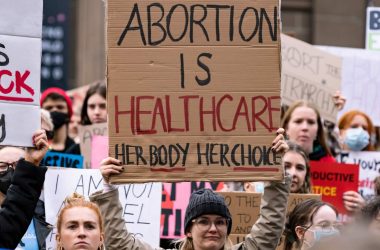Washington, DC—(ENEWSPF)—December 23, 2014. The following blog was posted today, Tuesday, December 23, 2014, at http://www.hhs.gov/healthcare/facts/blog/2014/12/open-enrollment-week-five.html.
Open Enrollment Week 5: December 13 – December 19, 2014
From November 15 to December 19, nearly 6.4 million consumers selected a plan in the Federally Facilitated Marketplace (FFM) or were automatically re-enrolled, with approximately 30 percent of this total comprised of people newly signing up for Marketplace coverage. High consumer demand as we neared the December 15 deadline and the automatic enrollment process that began on December 16 contributed to the overall total.
“We still have a lot of work to do before the February 15 enrollment deadline, but this is an encouraging start. People shopped for coverage and signed up – finding more choices and greater competition,” HHS Secretary Sylvia M. Burwell said. “Thanks to the Affordable Care Act, so far nearly 6.4 million consumers, including about 1.9 million new consumers, have access to quality, affordable health coverage for 2015 through the federal Health Insurance Marketplace. This law is working, and families are better off as a result.”
HHS will produce more detailed reports that look at plan selection across the Federally Facilitated Marketplace and State-Based Marketplaces on a monthly basis. In addition, we are releasing weekly snapshots of preliminary data. These snapshots do not include the consumers who visited, called, shopped or selected a plan through a State-Based Marketplace.
The weekly Open Enrollment snapshots for the Federally Facilitated Marketplace provide point-in-time estimates for weekly data. These are preliminary numbers and could fluctuate based on consumers changing or canceling plans or having a change in status such as new job or marriage. The snapshots also include totals from the beginning of the 2015 Open Enrollment period, which started November 15, 2014. Note that data revisions may mean that the weekly totals do not sum to the cumulative numbers.
This is the first snapshot that includes within weekly and cumulative totals those consumers who were automatically re-enrolled. The automatic re-enrollment process began on December 16 and was completed for the vast majority of consumers on December 18.
Since the large volume of calls prior to December 15 led to longer wait times in Week 5, the call center collected the contact information for nearly half a million consumers. We began contacting these consumers on December 16 and, if they select a plan, their coverage can still begin on January 1.
Definitions and details on the data are included in the glossary.
|
Federal Marketplace Snapshot |
Week 5 |
Cumulative |
|
Plan Selections |
3,927,484 |
6,394,046 |
|
New consumers |
17 percent |
30 percent |
|
Consumers renewing coverage |
83 percent |
70 percent |
|
Applications Submitted |
3,915,913 |
7,992,185 |
|
Call Center Volume |
2,179,933 |
6,279,077 |
|
Average Call Center Wait Time |
23 minutes 45 seconds |
9 minutes 40 seconds |
|
Calls with Spanish Speaking Representative |
136,364 |
497,374 |
|
Average Wait for Spanish Speaking Rep |
1 minute 33 seconds |
32 seconds |
|
HealthCare.gov Users |
4,173,531 |
14,054,904 |
|
CuidadoDeSalud.gov Users |
160,630 |
490,191 |
|
Window Shopping HealthCare.gov Users |
1,284,275 |
5,116,994 |
|
Window Shopping CuidadoDeSalud.gov Users |
32,583 |
111,143 |
Consumers can shop and sign up for affordable health coverage that fits their health and financial needs any time between now and February 15, 2015. If a consumer who was automatically re-enrolled decides in the coming weeks that a better plan exists for their family, they can make that change at any time before the end of Open Enrollment on February 15.
Glossary
Plan Selections: The weekly and cumulative metrics provide a preliminary total of those who have submitted an application and selected the plan that best fits their needs. In addition, totals now include those consumers who were automatically re-enrolled into their current plan or a plan with similar benefits. As noted previously, these numbers fluctuate based on consumers changing or canceling plans or having a change in status such as a new job or marriage; changes for the entire open enrollment period are reflected in the most recent weekly and cumulative metrics.
To have their coverage effectuated, consumers need to pay their first month’s health plan premium. This release does not include effectuated enrollment.
All references to the Marketplace in this report refer to 35 states that are states that used the HealthCare.gov platform in both 2014 and 2015 and Oregon and Nevada, which are new to the Federally Facilitated Marketplace platform in 2015. Those states include: Alabama, Alaska, Arizona, Arkansas, Delaware, Florida, Georgia, Illinois, Indiana, Iowa, Kansas, Louisiana, Maine, Michigan, Mississippi, Missouri, Montana, Nebraska, New Hampshire, New Jersey, Nevada, New Mexico, North Carolina, North Dakota, Ohio, Oklahoma, Oregon, Pennsylvania, South Carolina, South Dakota, Tennessee, Texas, Utah, Virginia, West Virginia, Wisconsin, and Wyoming.
New Consumers: New consumers are those consumers who are selecting a plan for the first time or whose plan selection in 2014 was terminated, because, for example, they failed to pay their premium or gained coverage through employer-sponsored insurance. In addition, because Oregon and Nevada consumers now use the Federally Facilitated Marketplace platform, they are considered new enrollments.
Consumers Renewing Coverage: Consumers with 2014 effectuated enrollment who actively submitted a 2015 application and selected a plan or were automatically re-enrolled into their current plan or a plan with similar benefits.
Applications Submitted: A consumer who has completed an application and submitted it or who through the automatic enrollment process had an application submitted to the Federally Facilitated Marketplace. If determined eligible for Marketplace coverage, the consumer still needs to pick a health plan that best fits their financial and health needs and pay their premium to get covered. Because families can submit a single application, this figure tallies each person covered by an application. The weekly and cumulative metrics total the number of people who have submitted an application.
Call Center Volume: The total number of calls received by the Federally-Facilitated Marketplace call center over the course of a week or from the start of Open Enrollment.
Calls with Spanish Speaking Representative: The total number of calls received by the call center where consumers chose to speak with a Spanish-speaking representative. These calls are not included within the call center volume.
Average Call Center Wait Time: The average amount of time a consumer waited before reaching a customer service representative. The cumulative total averages wait time over the course of the extended time period.
HealthCare.gov or CuidadodeSalud.gov Users: The user metric totals how many unique users viewed or interacted with either or over the course of a specific date range. For cumulative totals, a separate report is run for the entire Open Enrollment period to minimize users being counted more than once during that longer range of time and to provide a more accurate estimate of unique users. Depending on an individual’s browser settings and browsing habits, a visitor may be counted as a unique user more than once. Note: in reporting from the last open enrollment period “users” was reported as “unique visitors”.
Window Shopping HealthCare.gov Users or CuidadoDeSalud.gov Users: The user metric totals how many unique users interacted with the window-shopping tool over the course of a specific date range. For cumulative totals, a separate report is run for the entire Open Enrollment period to minimize users being counted more than once during that longer range of time and to provide a more accurate estimate of unique users. Depending on an individual’s browser settings and browsing habits, a visitor may be counted as a unique user more than once. Users who window-shopped are also included in the total or user total. Note: in reporting from the last open enrollment period “users” was reported as “unique visitors.”
Source: hhs.gov








